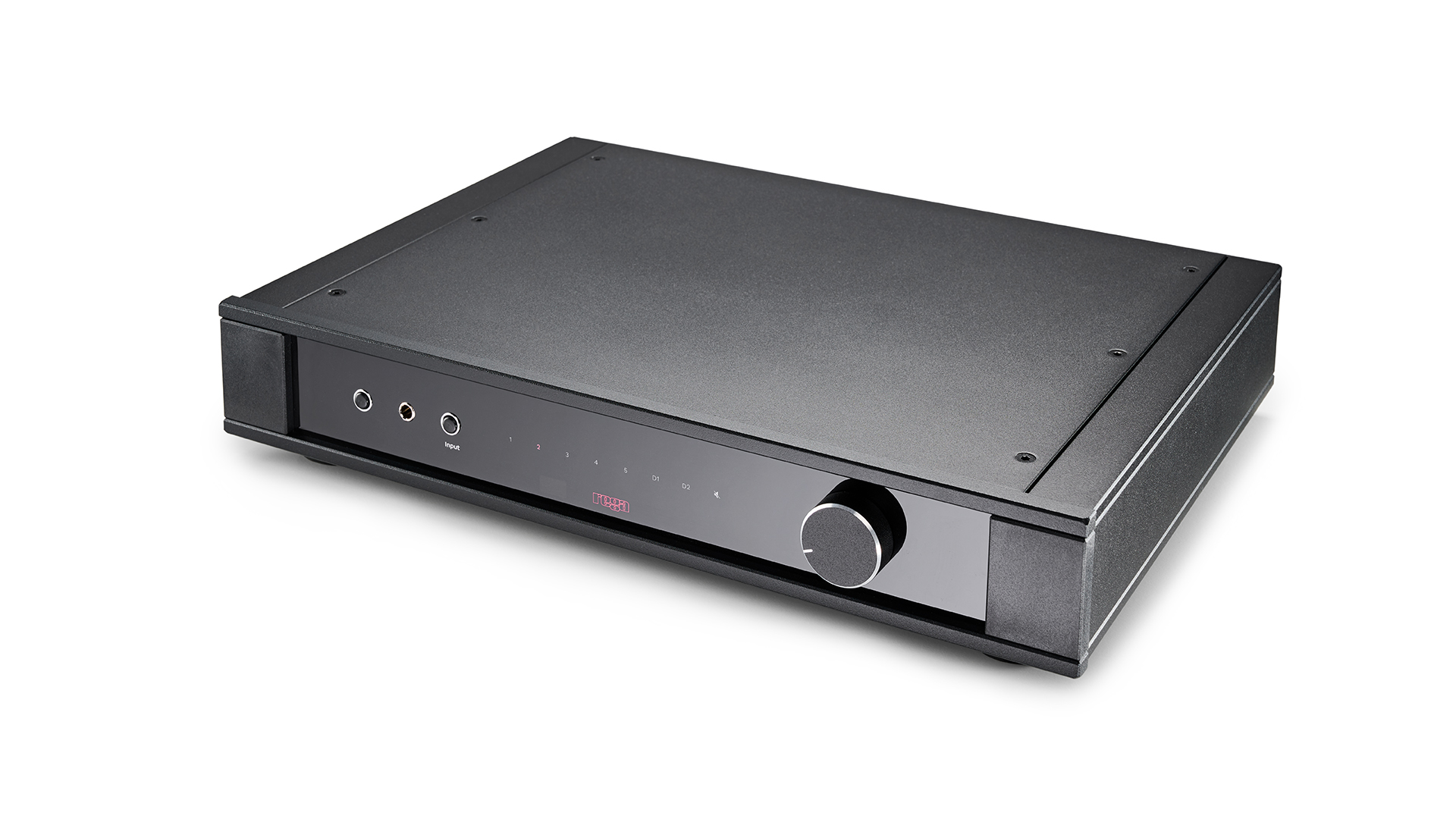What Hi-Fi? Verdict
An assured, elegant and capable performer that cuts to the heart of the music, this Rega amplifier is a stunning upgrade
Pros
- +
Astonishingly revealing sound
- +
Terrific timing and agility
- +
High quality build
Cons
- -
Needs careful system matching
- -
Some might want a more muscular sound
Why you can trust What Hi-Fi?
Rega has been dragged kicking and screaming into the digital age. The once staunchly all-analogue UK hi-fi brand has slowly but surely been introducing – gasp! – a DAC into its stereo amplifiers. It happened with the Elicit Mk5 amplifier (five stars, £2000 / $3345 / AU$4299) and it’s now the turn of the mid-tier Elex model to get the digital upgrade.
But the inclusion of a DAC (and a headphone port) aren’t the only things that make this Rega special. This integrated amplifier is the successor to our multiple-Award winning Rega Elex-R, one of our favourite amplifiers of the last decade. That was a terrific amplifier that was very much due an upgrade, and the new Rega Elex Mk4 has plenty to prove in a highly competitive market.
It’s priced at £1199 / $1875 / AU$2499, which pitches it against our current Award-winning Cambridge Audio CXA81 (£999 / $1299 / AU$2199), an excellent amplifier that, incidentally, knocked the outgoing Elex-R off its perch to win that Award. Will Rega reclaim this spot?
Build

The Elex Mk4 has been given a new casework and minimal redesign to match the rest of Rega’s latest models, such as the recent Elicit Mk5 and Aethos amplifiers. It’s a sturdy, hefty build. The profile is streamlined, and slightly slimmer than the outgoing Elex-R.
The all-black metal casing is of a high standard (and dissipates heat better by functioning as a big heat sink), with only a handful of buttons and red LEDs adorning the fascia. Everything works smoothly and is responsive to use, whether you’re using the on-unit volume dial or the simple but well-laid-out remote.
Rega hasn’t entirely thrown out its own rule book with this new digital-equipped amp. The Elex Mk4 is still a Class A/B design with a powerful 72 watts per channel into 8 ohms (or 90W into 6 ohms), which is more than enough to drive most speakers. For this new iteration, the entire circuit board has been re-jigged by Rega’s engineers to improve performance, with special care taken when choosing key audio components in the design. Power is provided by a multi-stage linear supply that is designed to run as quietly as possible. And with Rega’s history with record players, there should be no surprise that it comes with a good quality moving magnet phono stage on board.
Features
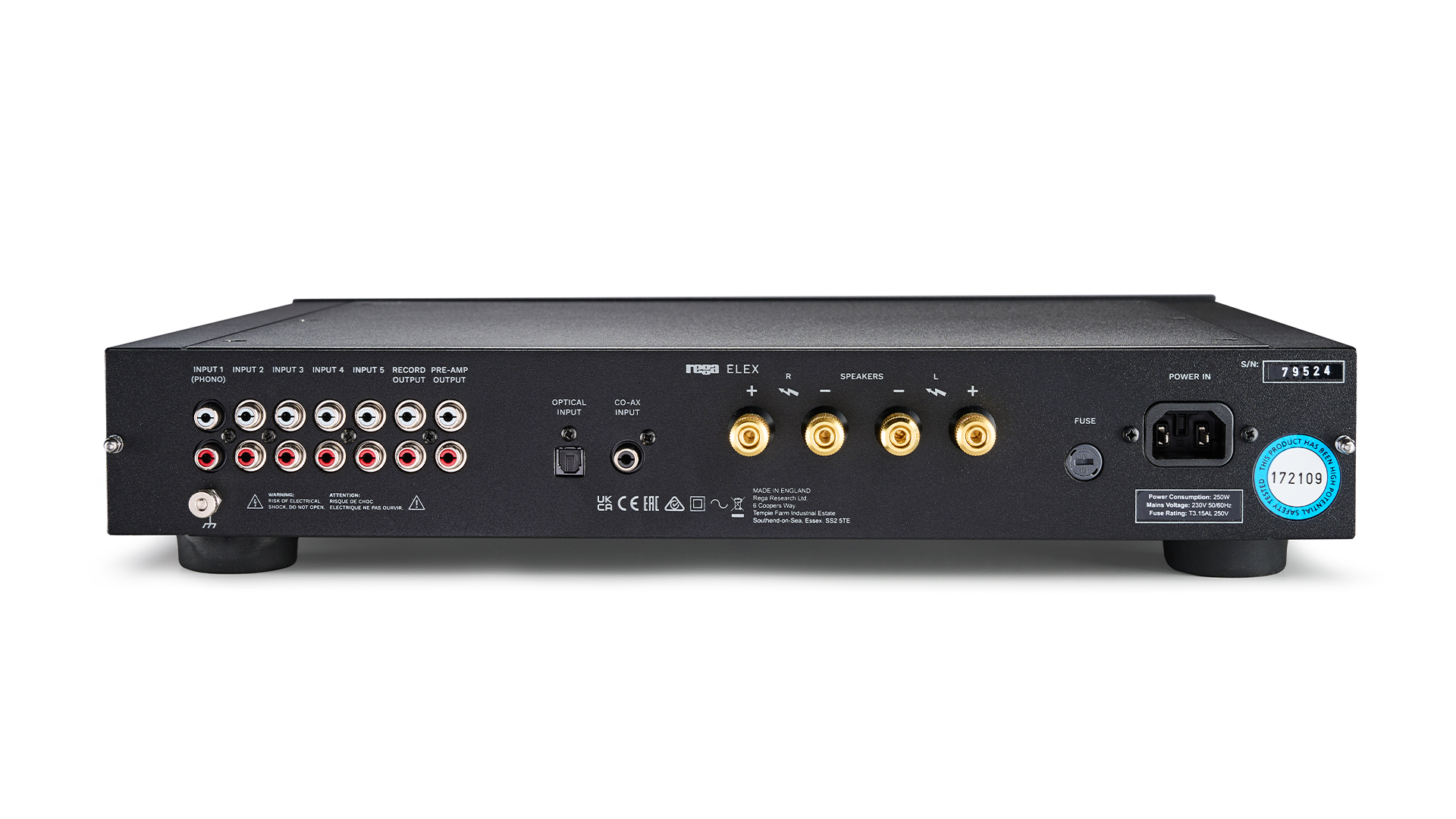
The biggest evolution from the previous model is, of course, the inclusion of a DAC for the first time in the Elex range. Don’t worry though, Rega hasn’t strayed too far from its all-analogue heart. You only get two digital inputs and, for better or worse, there still isn’t any Bluetooth or streaming on board. This echoes the latest Rega Elicit Mk5’s connections, which similarly included an onboard DAC for the first time.
Around the back, you’ll find a single set of speaker terminals, four line-level inputs, one phono input, a record output and preamp output. Unlike the line-level connections, the digital coaxial and optical inputs are not numbered to correspond with the input selector on the front panel. A very swift process of elimination shows that coaxial is D1 and optical is D2, but we wish Rega had given a bit more care to the labelling.
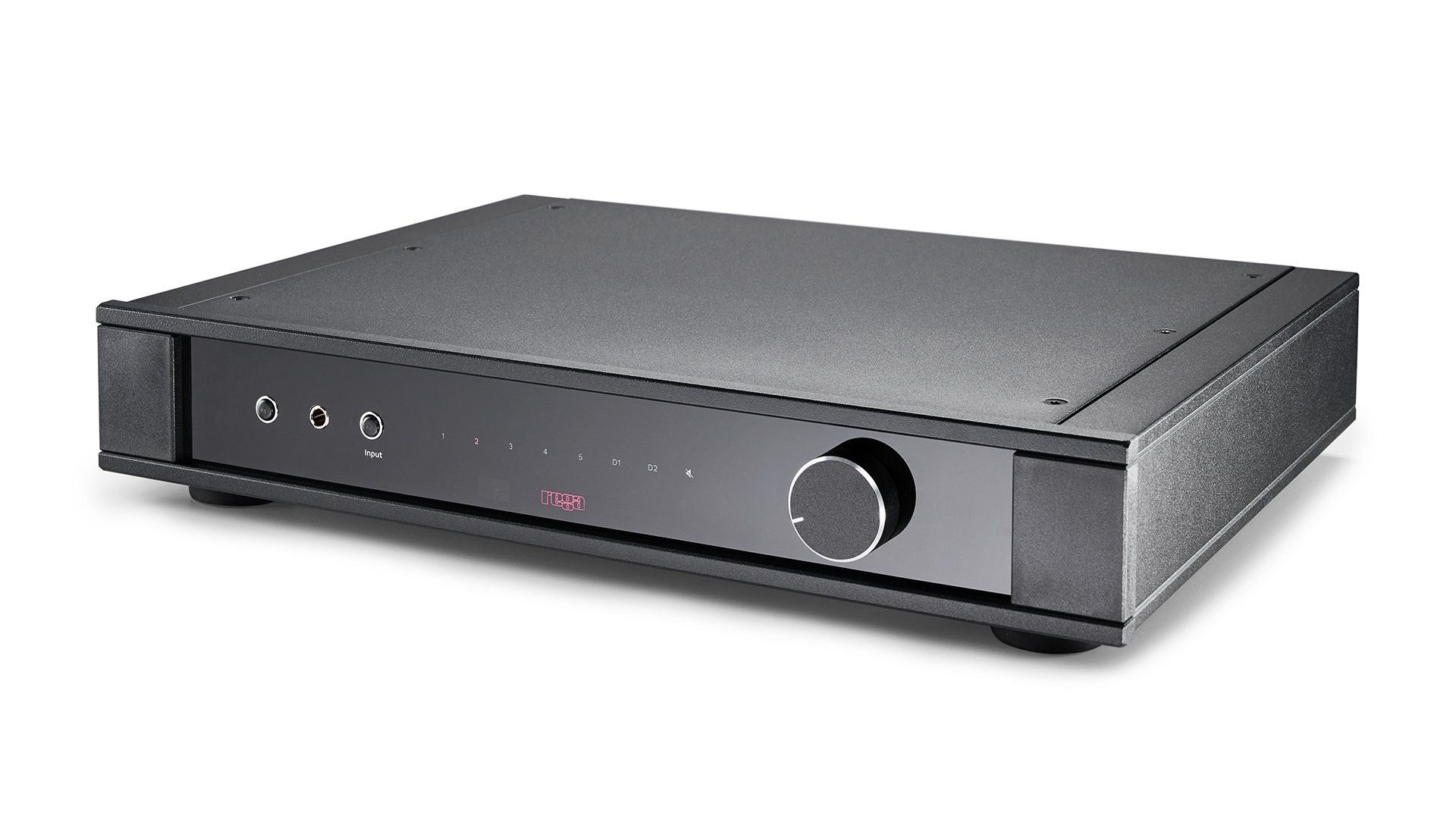
Power 72W per channel (into 8 ohms)
Phono stage? Yes (MM)
Analogue inputs Line level x4
Digital inputs Coaxial, optical
Bluetooth? No
Headphone output? Yes (6.3mm)
Dimensions (hwd) 8.2 x 43.2 x 34cm
Weight 11 kg
At this price point, closest rival Cambridge Audio CXA81 offers a handful more inputs (an extra coax, USB input, balanced XLR) and two sets of speaker terminals and Bluetooth streaming. That’s a great spread of options for less money, but most people realistically don’t own more than two or three sources (if that), so the Rega should easily accommodate most traditional sources.
The integrated DAC is based on the standalone Rega DAC-R model’s circuitry, and the digital inputs can handle PCM audio files up to 24-bit/192kHz. For those worried that the analogue sound might be affected, worry not. Rega has taken care that the “analogue side of the circuit is not affected in any way by the introduction of digital inputs”.
How? The digital and analogue supply rails are “galvanically isolated” – which means this prevents any physical link between them and minimises the potential for signal interference. Noise from one can’t be transmitted to the other, which should result in cleaner detail retrieval and low distortion levels.
The 6.3mm headphone socket is a very welcome addition here, and should work with a wide range of headphones. During our testing, we use everything from the Grado SR325x (around £270 / $295 / AU$419) to the Beyerdynamic T1 (£899 / $999 / AU$1599) and Focal Clear Mg (£1399 / $1490 / AU$2199) and the Rega takes them all in stride.
Sound
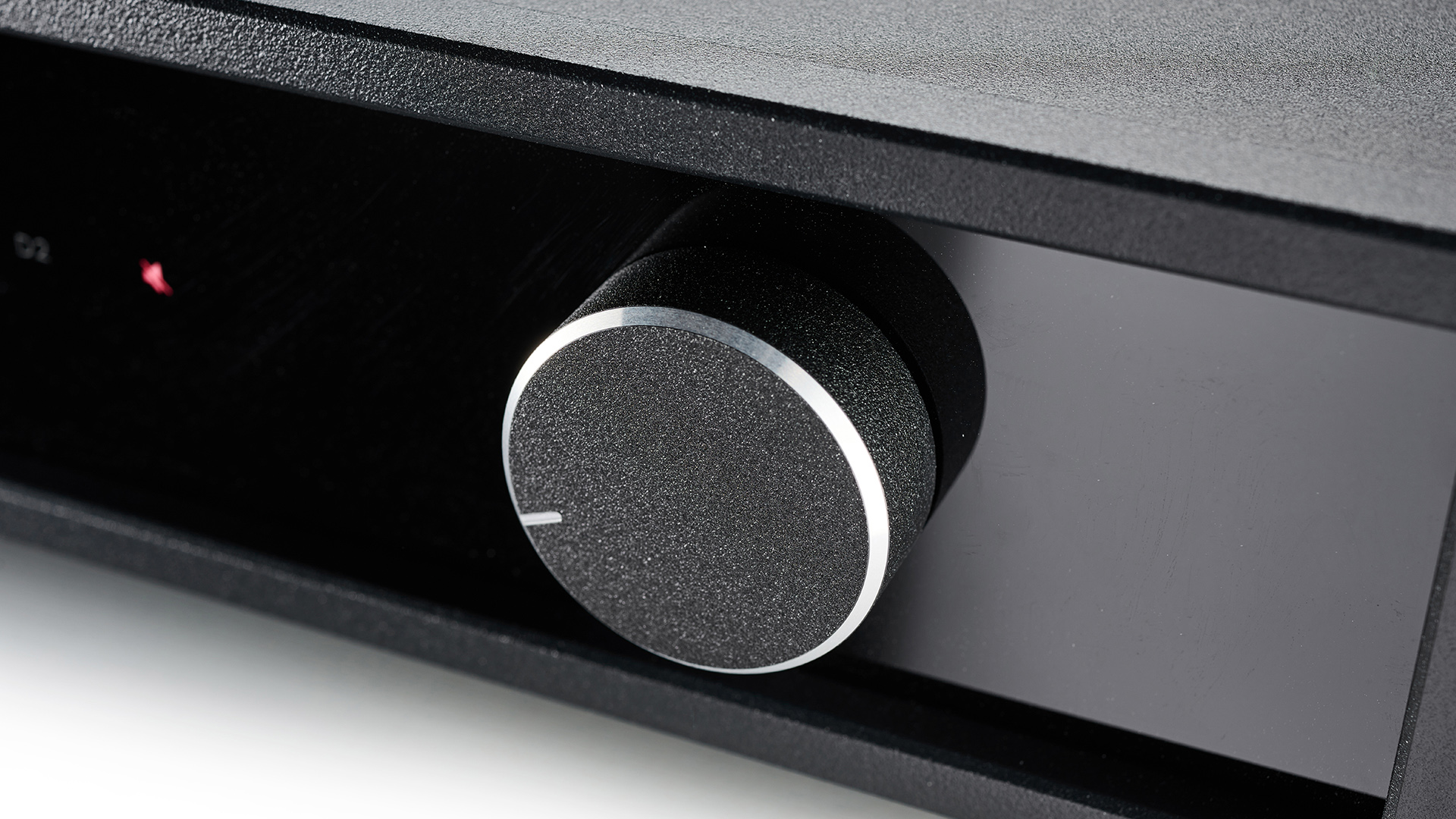
This isn’t a showy amplifier; it doesn’t try to artificially grab your attention or hide any insufficiencies behind metaphorical jazz hands. It simply handles every element of the music in an incredibly assured and elegant manner. This is an amplifier that knows what it’s doing and wants you to just sit back and listen.
Play The Chain by Fleetwood Mac through the analogue inputs and the spread of sound from the Elex Mk4 is wide and open, with ample space for every well-placed instrument to flourish. Rhythmically, it times superbly. The famous bassline in the outro is pulled taut and tightly delivered – it goes deep, but there’s no flab.
The way the Rega handles music – delivering it as a cohesive whole rather than individual elements – is effortlessly done. We struggle to focus on particular strands or frequencies to critique, and instead are content listening to track after track and marvelling at how the Rega turns its hand to every song. It simply doesn’t impose itself on the music. That’s a huge accomplishment in its own right, and while this does mean it’s rather transparent to source materials and recording qualities, the resulting experience is more enjoyable than it is analytical.
One of the things we love about the Elex Mk4 is the way in which it delivers vocals in such an elegant way: articulate and nuanced, every intake of breath revealed, with all the emotion behind the lyrics and the intent of the song clearly communicated. Whether that’s Tom Waits’ gravelly-toned rumbles, Lizzo’s sparkly attitude or Brandi Carlile’s powerful singing – the amplifier translates it all without any embellishment. This is an amplifier that cuts right through to the heart of the music.
Edges of notes are crisp and precise, and there are layers of detail and texture around the electronic piano and soft, muted vocals in Right Where it Belongs by Nine Inch Nails. The dynamic shifts and change in atmosphere surrounding Trent Reznor's voice as the song moves from a small, intimate space to a large, live crowd are palpable – it’s not overly dramatic, but done with a delicate touch that still lands with impact.
Happily, it doesn’t lose any of its punch or clarity when listening at low volume. It equally keeps its composure when pushed to party levels. What’s more, the sound is clean and easy to listen to, never sounding too loud or bright when we push it hard.
Switching to the coaxial input to try out the internal DAC, the Rega retains the same sonic hallmarks. There is a touch more punch and forwardness to the sound, but you do lose an ounce of that spaciousness, textural layering and subtlety that you get when using the analogue inputs.
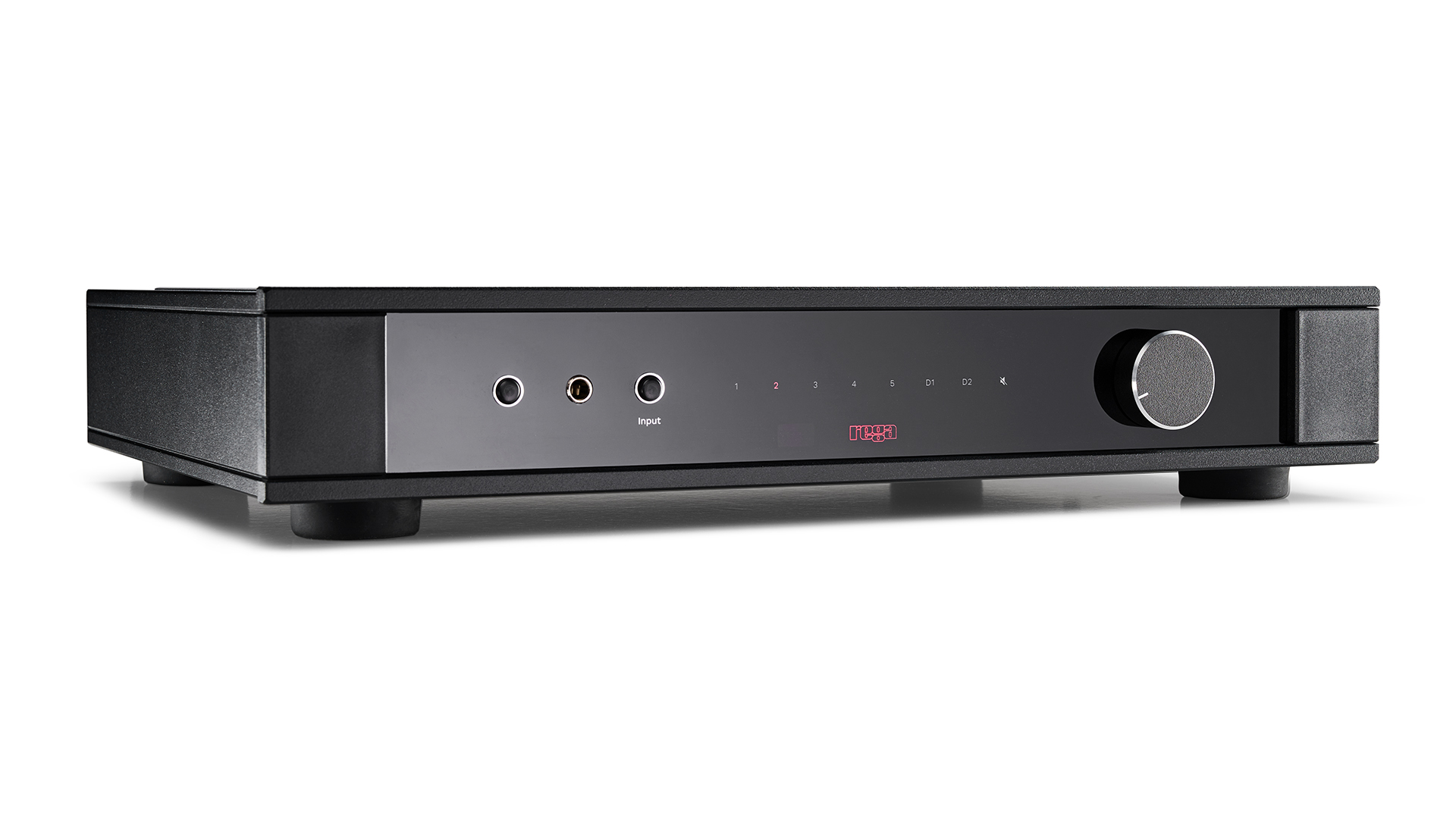
The Elex Mk4 does have a rather lean sound. It’s a character that works to its advantage when it comes to timing. Agile and nimble-footed, it can be as pacy or as steady as needed. Radiohead’s 15 Step and Circling by Four Tet are prime examples of complex arrangements that need every element marshalled with authority and timed to perfection to make sense of the rhythm (which the Rega does). Conversely, the meditative, mournful melody in Nick Cave’s People Ain’t No Good is delivered in an unhurried manner by the Rega.
However, there are times when we want a bit more grunt and muscle from the Elex Mk4. A switch to the older Elex-R reveals a meatier sound that you can sink your teeth into, but it is at the expense of the immense clarity, agility and openness you get from the newer model. There’s no question of which amp is the better and preferred option. That doesn’t mean the new Rega lacks energy or bite; we just want the sound to be a little more grounded and solid. This lean character (one we’ve heard many times in other Rega products) requires partnering the Elex Mk4 with care to make it sound its best. We’d avoid any bright or forward sounding kit as a rule; pairing it with speakers with more richness to the tone – like the KEF LS50 Meta (or even, say, the Wharfedale Linton) – will give the sound more body and weight.
Comparing the Rega Elex Mk4 to the current class-leading Cambridge Audio CXA81 is a tale of trade-offs. The CXA81 has a lively, full-bodied tone that is more immediately likeable. It’s highly entertaining, with a lovely sense of weight and richness to the cello notes in Agnes Obel’s Fuel To The Fire. But the piano notes have so many more layers and sound more realistic through the Rega amp. Her voice – while sounding beautiful through the Cambridge – is ethereal through the Rega. The CXA81 sounds smaller in scale whereas the Rega is expansive. Both amps time well and we can see many preferring the CXA81’s friendlier approach. But the Rega communicates the tempo of a song in a more authoritative, revealing way.
Also in keeping with the Elex Mk4’s overall sound character is the phono stage. Nick Cave And The Bad Seeds’ The Boatman’s Call record is rendered neatly through the Rega, when played from our reference Technics SL-1000R/Vertere Sabre MM deck. It’s a decent phono stage for this price level, although if you’re serious about vinyl replay and getting the best sound, we’d always recommend an outboard phono stage.
We mentioned earlier that we used a variety of headphones to try out the Elex’s new headphone port, and the Rega’s transparency with partnering kit and source material once again was laid bare. We wouldn’t recommend pairing the amp with the forward-sounding Grados; the richer, fuller Beyerdynamics are a better match sonically and price-wise. However, we are surprised by just how easily it pairs with the much pricier Focal Clear Mg – songs sounded clear, full of depth and fluid dynamics.
Verdict
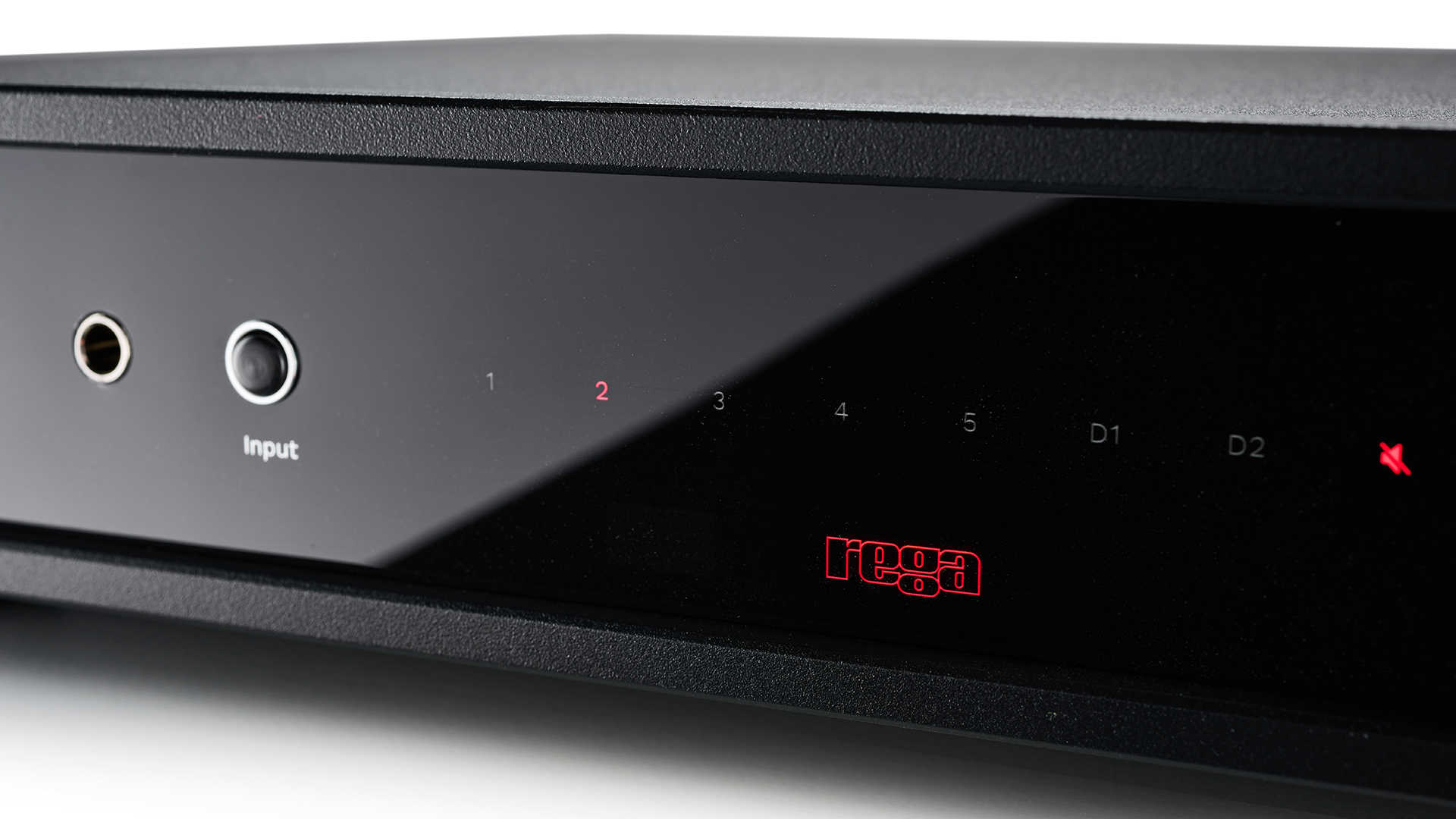
The Rega Elex Mk4 is a stunning amplifier. Revealing and faithful, it’s capable in ways far beyond our expectations at this mid-tier price point. The addition of digital inputs and a headphone port is a great step in the right direction, giving customers more flexibility in how they listen to this terrific amp.
It’s not perfect – a more grounded sound that doesn’t affect its timing would be welcomed with open arms – but the elegant, confident way it delivers music is something that’s rare at this level. If you take the time to partner it carefully, this stereo amplifier will work wonders.
SCORES
- Sound 5
- Build 5
- Features 4
MORE:
Also consider the Cambridge Audio CXA81
The best John Williams movie scores to test your hi-fi system
Here's our pick of the best stereo amplifiers you can buy
What Hi-Fi?, founded in 1976, is the world's leading independent guide to buying and owning hi-fi and home entertainment products. Our comprehensive tests help you buy the very best for your money, with our advice sections giving you step-by-step information on how to get even more from your music and movies. Everything is tested by our dedicated team of in-house reviewers in our custom-built test rooms in London, Reading and Bath. Our coveted five-star rating and Awards are recognised all over the world as the ultimate seal of approval, so you can buy with absolute confidence.
-
DistortedVision With it's relatively high price tag they could have made it look more attractive.Reply -
npxavar No 4Ω rating. Judging from the beefy toroidal, this is probably due to the lack of a proper heatsink.Reply -
borinot i got one myself and i had to go back to using my Cambridge Dac Magic 100, using the integrated DAC was unbereable, did someone test the dac? The curious thing is they both use the same chip, but man the difference...Reply -
previlo One question, the previous model ELEX-R had the "issue" of popping sound when turned of, since there was no relais which prevents the signal (stored voltage of the circuit board) getting to the loudspeakers while turning off - has since been adressed with the ELEX MK4?Reply
Or is there a (slight or louder?) popping sound when the amp is being turned off?
Thanks for sharing our feedback! -
borinot Replyprevilo said:One question, the previous model ELEX-R had the "issue" of popping sound when turned of, since there was no relais which prevents the signal (stored voltage of the circuit board) getting to the loudspeakers while turning off - has since been adressed with the ELEX MK4?
Or is there a (slight or louder?) popping sound when the amp is being turned off?
Thanks for sharing our feedback!
i don't hear any popping with mine when i turn it off. -
Entrigo Reply
Very late to the party but just got a Fono MM MK5 and was looking at the Elex as next amp - the Fono definitely has that popping sound when you turn it off.previlo said:One question, the previous model ELEX-R had the "issue" of popping sound when turned of, since there was no relais which prevents the signal (stored voltage of the circuit board) getting to the loudspeakers while turning off - has since been adressed with the ELEX MK4?
Or is there a (slight or louder?) popping sound when the amp is being turned off?
Thanks for sharing our feedback!
